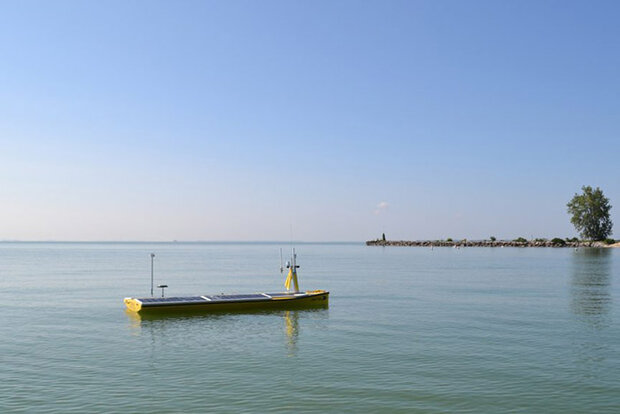Failing upwards: Developing an autonomous surface vehicle to advance ‘omics research

The solar-powered SeaTrac is an autonomous surface vehicle capable of navigating the shallow waters of western Lake Erie. Credit: NOAA/GLERL

The solar-powered SeaTrac is an autonomous surface vehicle capable of navigating the shallow waters of western Lake Erie. Credit: NOAA/GLERL
For engineers and scientists, sometimes failure means progress. When developing a new technology, the process is to field test, fail, tweak, and test again, each time failing a little less and learning what does and does not work until – finally – they get it right. On August 5, 2023, scientists from NOAA’s Great Lakes Environmental Research Laboratory (GLERL), NOAA’s Atlantic Oceanographic and Meteorological Laboratory (AOML), and the Monterey Bay Aquarium Research Institute (MBARI) watched as a new solar powered surface vehicle, the SeaTrac, sailed off across the Great Lakes. For two weeks, the vessel autonomously navigated the shallow waters of western Lake Erie equipped with state-of-the-art technology, unlocking advancements in ‘omics research and our ability to monitor harmful algal blooms (HABs).
“Sometimes it’s gotta fail to move forward,” said Kelly Goodwin, Ph.D., an AOML scientist and chair of the NOAA ‘Omics Working Group. “You tweak it and then take it out to the field again, thinking it’s going to work. You keep trying, going back to the drawing board until it does.”